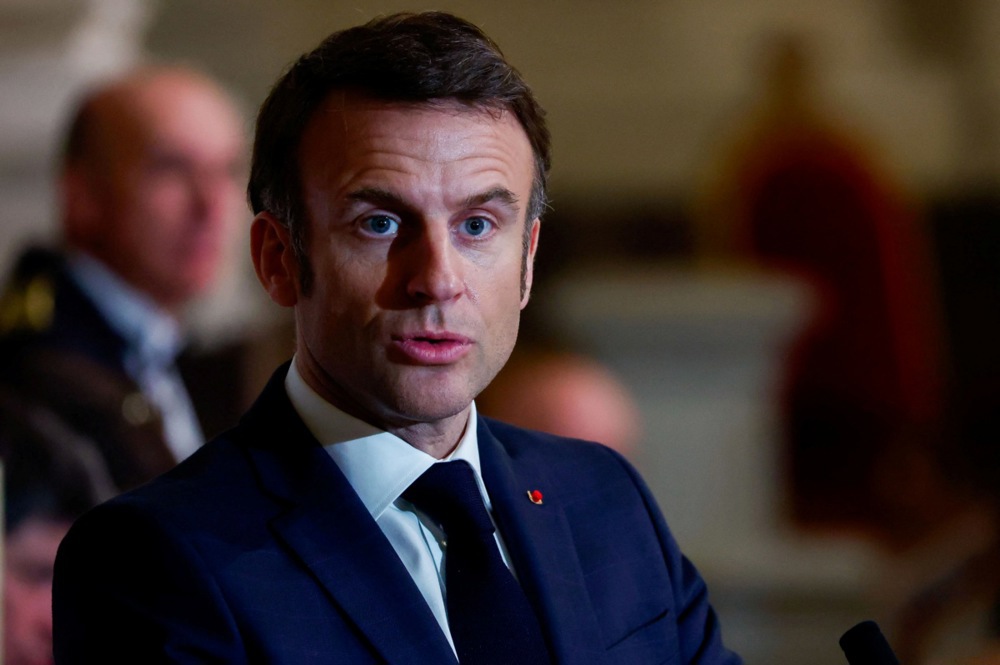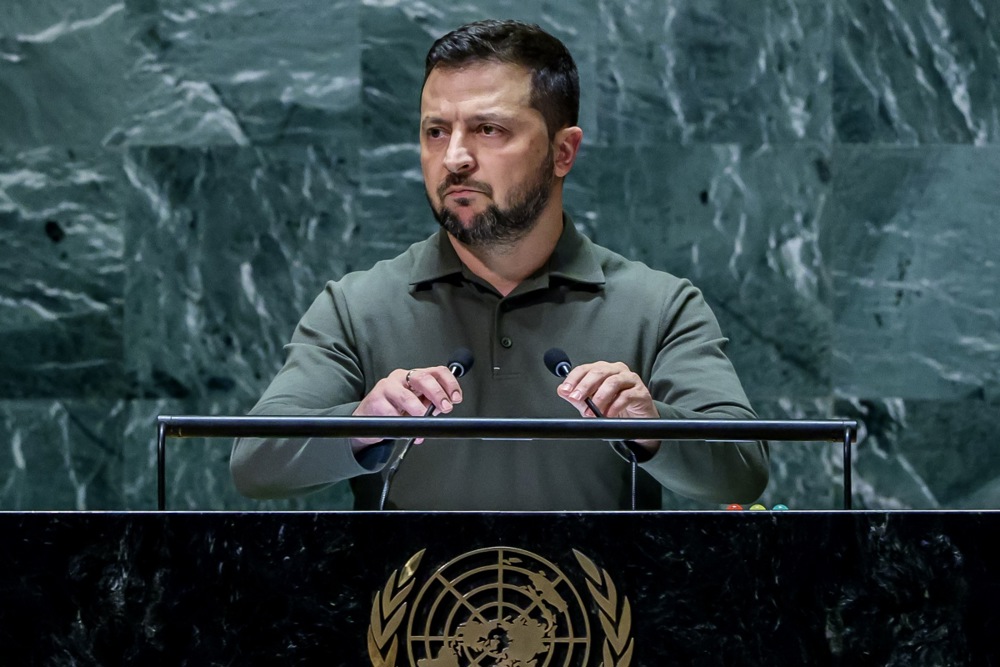Conventional wisdom often gets a bad rap when things go wrong, but it should normally be a source of strength. The clue is in the name: joining “convention” (when certain ways of doing or thinking about things become standardised) with “wisdom” (a promise that those standards are very high, and our thinking very clever), makes for a powerful combination.
The problem is when the conventional wisdom becomes stale and then ossifies around certain fixed ideas that go unchallenged for so long that they turn into dogmas and clichés. Certainly in the field of strategic and military affairs, received ‘formulas’ for how the world supposedly works – together with concepts and definitions inherited from previous generations of defence intellectuals and strategists – circulate in an endless feedback loop within so-called ‘strategic communities’. The notorious phrase, ‘rules-based international order,’ is a good – and lamentable – example.
We know that history is turning when the old assumptions begin to break down. The map of conventional wisdom comes to be increasingly at odds with the territory. Then, when a major crisis strikes and those involved have to innovate – thus, think hard – or die, outmoded thinking and its illusions can be washed away rather quickly. We are seeing this playing out in real time in the context of the Ukraine war across at least three major areas of military affairs where conventional wisdom is either failing or is being severely tested.
The first is the value of nuclear weapons. The credibility of repeated nuclear threats by Putin’s regime, aimed at restraining the level of Western support for Ukraine at various points in the war, has worn thin through overuse. After much nuclear sabre rattling, followed by precisely zero consequences when Ukraine would cross yet another perceived Russian “red line,” much of the Western analytical community is reviewing its opinions on nuclear affairs.
The nuclear-use threshold appears to be much higher than was assumed at the start of the war – and indeed, it is perhaps fair to say, throughout the Cold War itself. Even relatively large scale Ukrainian drone strikes on Moscow or a cross-border ground offensive into sovereign Russian territory don’t seem to move the needle on the prospect of retaliatory tactical nuclear strikes.
No doubt, a significant restraining factor on the Kremlin is China’s clear opposition to any such action. But this is likely always going to be the case, as no conflict involving a major power will be fought in isolation from the opinion and vital support of important allies; the cost of ignoring it would be politically catastrophic.
Indeed this is not a new lesson: the UK had the same technical ability to strike Argentina with tactical nukes during the Falklands War as Russia has now with respect to Ukraine. But for London this was morally and politically out of the question, and was never seriously considered. Yet it seems to be taking another war to prove just how little real active value there is to nuclear weapons even in a vicious, large-scale state-on-state conflict.
In terms of global security, this is good news: any kind of nuclear strike, even at a low level, would be a concern for the entire world, and must be avoided. But in terms of national strategy, the nuclear lessons from Ukraine will be bad news for smaller powers like the UK who tend to over-emphasise the utility of their nuclear arsenal. That is certainly a pathology of British defence thinking – almost a coping mechanism – in the face of shrinking national armed forces. Alas, the Ukrainian war shows that a nuclear arsenal – especially one practically limited to a strategic role – is no substitute for conventional military power.
The second assumption questioned by the Ukraine war is the value of “deterrence” itself. This was evident from the start of the Russian invasion of 2022, which constituted a huge failure of Western deterrence overall. Discussion of this crucial point and its consequences has been studiously avoided, by and large, in Western analysis – and for understandable reasons. It is uncomfortable to dwell on the fact that the US-led Western alliance, with all its armaments and political weight, whose main raison d’être has been, since 1945, the prevention of another state-on-state war in Europe, has utterly failed in this fundamental task.
That Putin went ahead with his attack despite stern “warnings” from the US and other NATO allies, has been variously described as evidence of his “madness” or “foolishness.” A better explanation can be given if we step away, for a moment, from the conventional wisdom that sees deterrence as purely a cost-benefit calculation. We have built up a considerable corpus of scholarship on “deterrence theory”; terms like “deterrence by denial” and “deterrence by punishment” are very much in vogue, and spark clever debates about credibility and so on.
There is certainly real value in these theoretical inquiries. Certainly, no one would suggest that at a very basic level the idea of deterrence – that credible defensive “overmatch” dissuades attacks – is not useful. But it can become a hollow mantra. The fact is that apparent overall strength is not at all a guarantee against aggression. It is not wrong to call for a stronger defence – indeed, it is essential – but neither is this the solution or insurance against a war breaking out, that many people think it is.
Post-WWII history – to say nothing about previous eras – provides quite a few examples of weaker actors or alliances attacking stronger ones. Most recently, the Houthis have been at it in the Red Sea. The responsibility for the 2008 Georgia war is still debated, but even respected analysts like Michael Kofman see Tbilisi as at least sharing the blame, and even talk in terms of “David” (Georgia) taking a “shot at Goliath” (Russia). Argentina took on Britain in 1982. Iraq attacked a nominally stronger Iran in 1980. Pakistan went to war against a superior Indian army in 1965. And before then, North Korea had struck at South Korea and its American superpower ally.
With Ukraine, Putin might have hoped to roll it over quickly, but he also understood the risk that the West might rally behind Kyiv and that in the end he might be confronting much more than just the Ukrainian state. This is why he prepared Russia methodically, both militarily and economically, for a major, hard war against more than Ukraine alone; and why he secured Chinese support in advance. Putin was well aware that he was potentially taking on a proxy war with the (nominally much more powerful) entire West, but he went ahead anyway.
The Ukraine example should prompt a deeper reconsideration of what deterrence actually means and how it can be reliably achieved – especially with a view to the China threat. Gaining an apparent military advantage over the adversary may be a necessary but not sufficient condition for avoiding conflict. Yet too much of the “strategic conversation” on deterrence is concentrated narrowly on the military calculus. A wider debate is needed.
A third set of assumptions that are being strongly challenged by the Ukraine war concern the value of naval power. Military operations since 2022 have certainly yielded many lessons about the changing character of war across all domains, particularly with the advent of large-scale, combined drone and missile strikes. But the impact on naval operations arguably carries the greatest long-term significance for the Western alliance in particular. This is because the US and UK are maritime powers which fundamentally depend on their navies to project power around the world. The other reason relates to the strategic competition against China, which in its military dimension is, again, overwhelmingly dependent on the ability to fight and win at sea.
The mauling experienced by the Russian Black Sea Fleet at the hands of the Ukrainians is a great triumph for Kyiv’s cause – but at the same time it bodes very ill for the future of allied ability to use their conventional naval power to good effect in the future. Remote surveillance – from space and highly capable drones – is not only making the land combat battlefield transparent: the maritime arena is also closely watched, with ships ever easier to spot and target. Then there is the multiplicity of long-range strike weapons – and combinations thereof – that can be employed with precision even against the best defended surface assets, as we have seen in and around Crimea.
To the Black Sea experience may be added the situation in the Red Sea, where a proxy group – not even a proper state – is able to use highly mobile launchers and other relatively advanced technology to tie down an entire allied fleet whilst evading destruction in its turn. Perhaps the biggest lesson from the campaign against the Houthis is the sheer quantity of assets and strike vectors required to be permanently ready to launch in order to take advantage of fleeting targeting opportunities and therefore to make a real dent in the adversary’s line-up. You may detect the enemy, but are you able to deliver a long-range missile on target quickly enough, and do it repeatedly, at scale, in a short interval? That is, if there are even enough missiles available in the first place.
The bottom-line here is that major surface warships are increasingly vulnerable in relatively enclosed maritime spaces and certainly in “littoral” operations. Unfortunately, these are exactly the areas where naval power would be most needed in a contingency. If ships have to remain ever farther offshore in order to survive – especially over the course of a long campaign – then the chances are, depending on the geography of the conflict, that their strike missions could be performed by other, land-based forces.
Other types of missions, such as amphibious assault – as opposed to sealift to a peaceful shore – are simply not viable anymore. Even blockade, historically the real war-winning naval strategy, might not require big, expensive ships in most future war scenarios.
Serious questions will likely start to be asked in the coming years about the purpose of large surface combatants in a major war, as they have been for some time in relation to aircraft carriers. The drone revolution is also disrupting undersea warfare. None of this means that entire classes of naval vessels will completely disappear – much less submarines – but it does mean that their roles, and therefore strategic value might change. If that happens, the impact on the global military balance will be profound.
As lessons from the ongoing Ukraine war start to filter through, they will inevitably begin to challenge conventional wisdom on a number of levels – and particularly in these three key areas of strategic affairs: nuclear forces, deterrence theory and naval power. Those nations able to grasp the essence of these trends and react to them in a deliberate, coordinated manner, will gain an advantage in the long term strategic competition. Let us hope it will be us, rather than our adversaries.
Gabriel Elefteriu is deputy director at the Council on Geostrategy in London and a fellow at Yorktown Institute in Washington, D.C.






The seven deadly contradictions of the Ukraine war